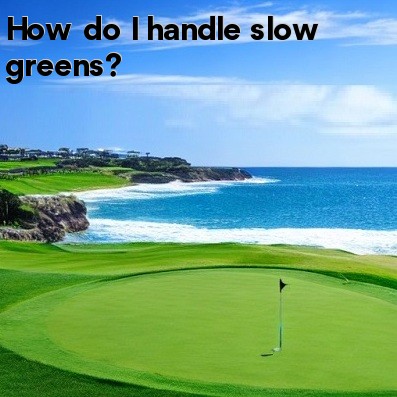
When it comes to playing golf, the speed of the greens can have a significant impact on your game. Slow greens can be frustrating, as they require you to adjust your putting technique and strategy. However, with the right approach, you can still navigate these slower surfaces effectively. Here are some tips to help you handle slow greens on the golf course:
- 1. Adjust your stroke: On slow greens, it is crucial to make adjustments to your putting stroke. The slower pace of the greens means that the ball will not roll as far as it would on faster greens. Therefore, you need to apply a little more force when striking the ball to get it to the desired distance. Be mindful not to overdo it, though, as this can lead to inconsistent results.
- 2. Take an extra practice swing: Before attempting the putt, take an extra practice swing to get a feel for the speed and firmness of the greens. This will help you gauge the amount of force needed to get the ball to the hole. Pay attention to the grass and how it reacts to the stroke, as this will give you valuable information about the speed of the greens.
- 3. Use more lofted clubs: Instead of relying solely on your putter, consider using a higher lofted club for shorter putts on slow greens. By using a pitching wedge or a sand wedge, you can generate more spin and lift on the ball, allowing it to roll smoothly across the slower surface. This technique can help compensate for the reduced speed of the greens.
- 4. Read the greens carefully: When faced with slow greens, it becomes even more critical to read the slope and break of the greens accurately. The reduced speed of the ball means that it will be more influenced by any undulations on the putting surface. Take your time to survey the green from multiple angles and carefully assess the direction and amount of break. This attention to detail is crucial for making accurate putts.
- 5. Maintain a positive mindset: Slow greens can be mentally challenging, as they may require you to make adjustments to your usual putting style. However, it is essential to stay positive and adapt your approach accordingly. Remember that everyone on the course is facing the same conditions, and a positive mindset can make a significant difference in your performance.
In conclusion, playing on slow greens in golf requires you to make adjustments to your technique and mindset. By adjusting your stroke, using more lofted clubs, reading the greens carefully, and maintaining a positive mindset, you can effectively navigate slower greens and still achieve success on the golf course. Embrace the challenge, and with practice and perseverance, you will become more comfortable and confident in handling different green speeds.





